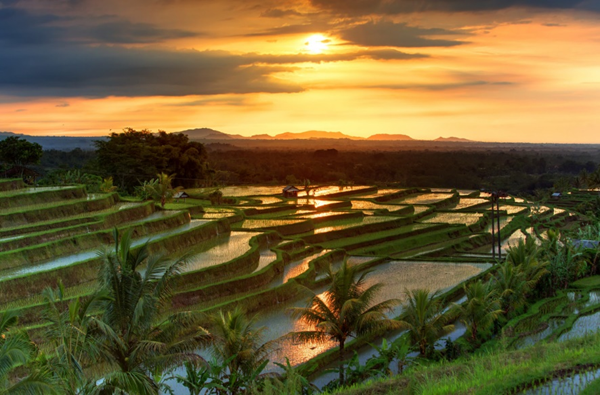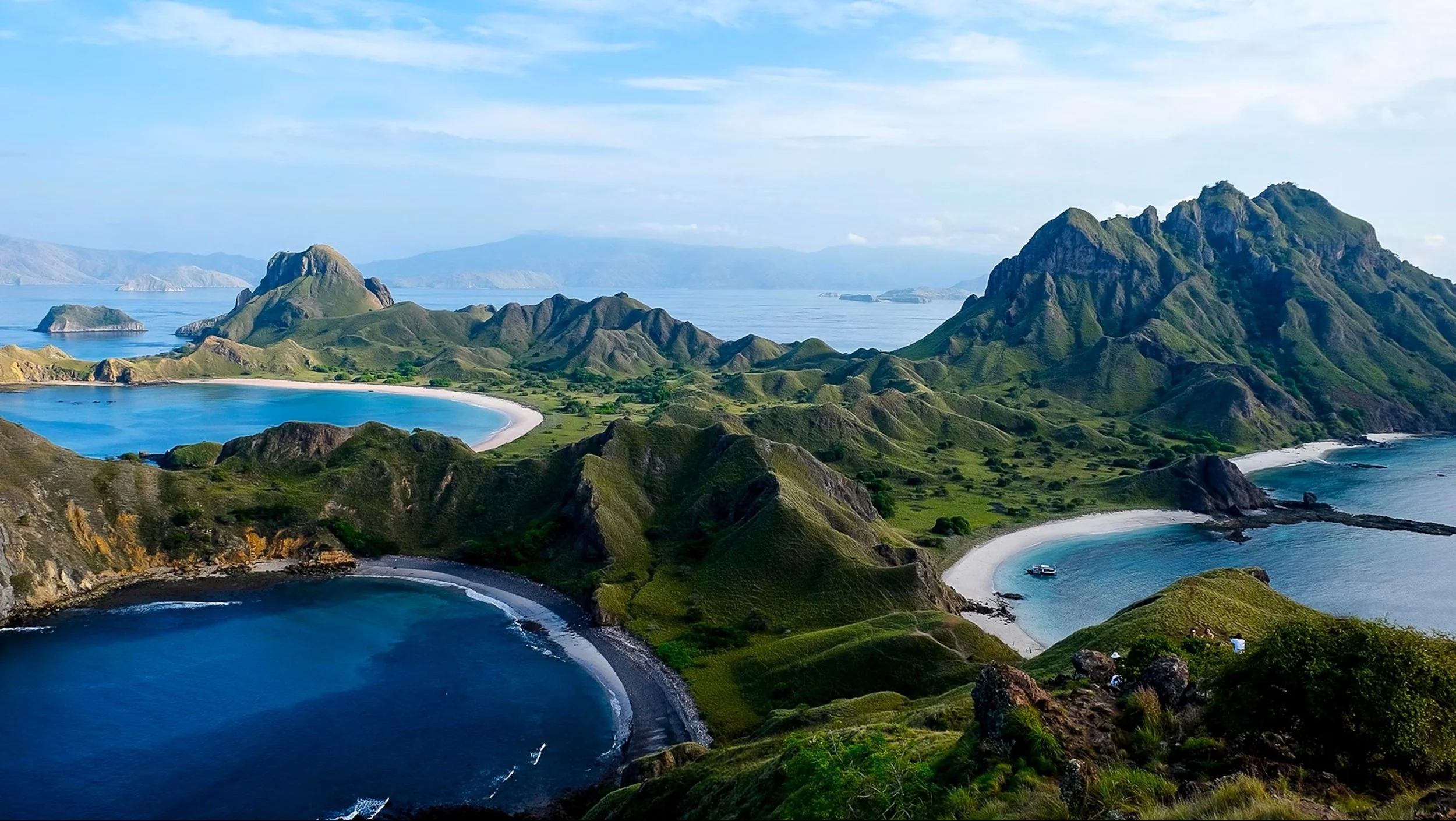Sacred Stones and Living Landscapes: Indonesia's Heritage Treasures
From ancient Buddhist temples shrouded in morning mist to rice terraces that shimmer like mirrors, Indonesia's nine UNESCO World Heritage Sites reveal a nation where spirituality, nature, and human ingenuity have danced together for millennia.
The first light of dawn creeps across the volcanic plains of Central Java, illuminating the weathered stones of Borobudur. This isn't just another temple visit—it's a pilgrimage through time, where 8th-century Buddhist artisans carved their devotion into over 2,600 relief panels. As the mist lifts from the surrounding palm groves, the massive stupas emerge like silent sentinels, each one a meditation on impermanence and enlightenment.
This is Indonesia at its most profound: a vast archipelago where ancient wisdom meets pristine wilderness, where traditional irrigation systems still nourish rice paddies, and where the world's largest lizards patrol volcanic islands. With nine UNESCO World Heritage Sites—more than any other Southeast Asian nation—Indonesia offers travelers something increasingly rare: authenticity that hasn't been theme-parked into submission.
Temples That Time Forgot
Borobudur and Prambanan
The twin architectural marvels of Central Java represent Indonesia's spiritual duality. Borobudur, the world's largest Buddhist monument, rises like a stone mandala from the Kedu Plain. Built without mortar, its million volcanic stones tell stories of the Buddha's path to enlightenment through intricate bas-reliefs that spiral upward toward nirvana.
Just 40 kilometres away, the Hindu temples of Prambanan reach skyward in a different architectural language—soaring spires dedicated to Shiva, Vishnu, and Brahma. The contrast is striking: where Borobudur invites contemplative circumambulation, Prambanan commands attention with its dramatic verticality. Both were abandoned mysteriously in the 10th century, only to be rediscovered by British administrator Thomas Stamford Raffles in the early 1800s.
Yogyakarta's Cosmic Blueprint
The newest addition to Indonesia's heritage roster is perhaps its most conceptually ambitious. The Cosmological Axis of Yogyakarta, inscribed in 2023, traces an invisible line from the fiery peak of Mount Merapi through the Sultan's palace to the Indian Ocean. This 18th-century urban planning masterpiece embodies Javanese cosmology in brick and stone—a living city designed as a meditation on the relationship between earthly and divine realms.
Where Agriculture Becomes Art
Bali's Subak System
Long before permaculture became fashionable, Balinese farmers perfected the art of sustainable agriculture. The Subak irrigation system, recognised by UNESCO in 2012, transforms Bali's volcanic slopes into stepped mirrors that reflect both sky and centuries of collective wisdom. This isn't merely about water management—it's the physical manifestation of Tri Hita Karana, the Balinese philosophy that seeks harmony between humans, nature, and the spiritual realm.
Walk through these terraces at sunrise in Jatiluwih or Tegallalang, and you'll understand why rice is considered sacred here. The gentle sound of water flowing through bamboo channels, the communal decision-making processes of local water temples, the precisely timed planting ceremonies—all of these elements combine to create what UNESCO calls "a living cultural landscape."
Evolutionary Footnotes and Industrial Archaeology
Sangiran and Sawahlunto
Some heritage sites tell their stories through grand monuments; others whisper through fragments. At Sangiran in Central Java, the tale is told in fossilised bones and ancient tools scattered across 56 square kilometres of gentle hills. This unassuming landscape has yielded more early human fossils than anywhere else on Earth, rewriting our understanding of human migration patterns across ancient Asia.
In contrast, the Ombilin Coal Mining Heritage of Sawahlunto speaks to more recent history. This West Sumatran town, inscribed in 2019, preserves the infrastructure of Dutch colonial ambition: railway lines that snake through mountain passes, miners' quarters that housed workers from across the archipelago, and processing facilities that fed the steam age. It's industrial archaeology at its most poignant—a reminder that heritage encompasses not just ancient grandeur but also the everyday struggles of working communities.
In Komodo National Park, Padar Island features three colored-sand beaches: pink, black, and white.
Photograph by K. Bonit Permadi, Alamy Stock Photo
Wild Indonesia
Komodo's Dragon Kingdom
The boat journey to Komodo National Park feels like travelling to the edge of the world. As the volcanic islands of East Nusa Tenggara emerge from the azure Flores Sea, you're entering the domain of the planet's largest lizard—a three-metre predator that seems lifted from prehistoric nightmares. But the Komodo dragon is just the headline act in a biodiversity spectacular that includes pink sand beaches, pristine coral reefs, and marine life that rivals any aquarium.
Papua's Pristine Wilderness
At the opposite end of the archipelago, Lorentz National Park in Papua preserves something increasingly precious: true wilderness. This is Southeast Asia's largest protected area, a landscape so diverse it encompasses glaciated peaks, tropical rainforests, wetlands, and grasslands. It's one of the few places on Earth where you can theoretically ski and surf on the same day—though the logistics might prove challenging.
Sumatra's Last Stand
The Tropical Rainforest Heritage of Sumatra tells a more urgent story. Comprising three national parks—Gunung Leuser, Kerinci Seblat, and Bukit Barisan Selatan—this site harbours some of the world's most endangered species, including the Sumatran orangutan, tiger, and elephant. Currently listed as World Heritage in Danger due to deforestation and encroachment, it serves as both a conservation success and a sobering reminder of what we stand to lose.
The Living Heritage Advantage
For discerning travellers and investors drawn to Indonesia—particularly Bali—these heritage sites represent something beyond mere tourism attractions. They're proof points of a deeper cultural authenticity that enriches any engagement with the archipelago. Bali's Subak system, for instance, isn't museum-piece agriculture but a living practice that influences everything from resort design to community planning.
The heritage recognition creates a protective framework that supports sustainable development while maintaining cultural integrity. For lifestyle investors seeking more than just tropical real estate, it's the difference between buying into a destination and joining a continuing story.
Planning Your Heritage Journey
The beauty of Indonesia's UNESCO sites lies in their diversity and accessibility. You can temple-hop through Central Java's ancient wonders, trek through Papua's untouched wilderness, or spend days exploring Bali's cultural landscapes. Each site offers a different lens through which to understand this complex, beautiful nation.
The key is allowing enough time. These aren't places to tick off a checklist but landscapes and monuments that reward slow, contemplative engagement. Like the Buddhist pilgrims who once circumambulated Borobudur or the farmers who still time their planting by lunar cycles, the best way to experience Indonesia's heritage is to move at the pace of deeper understanding.
Whether you're drawn by the architectural genius of ancient temple builders, the ecological richness of pristine national parks, or the living traditions that continue to shape modern Indonesian life, these nine UNESCO World Heritage Sites offer entry points into one of the world's most culturally and naturally diverse nations. In an age of homogenised travel experiences, they remain refreshingly, authentically Indonesian.




